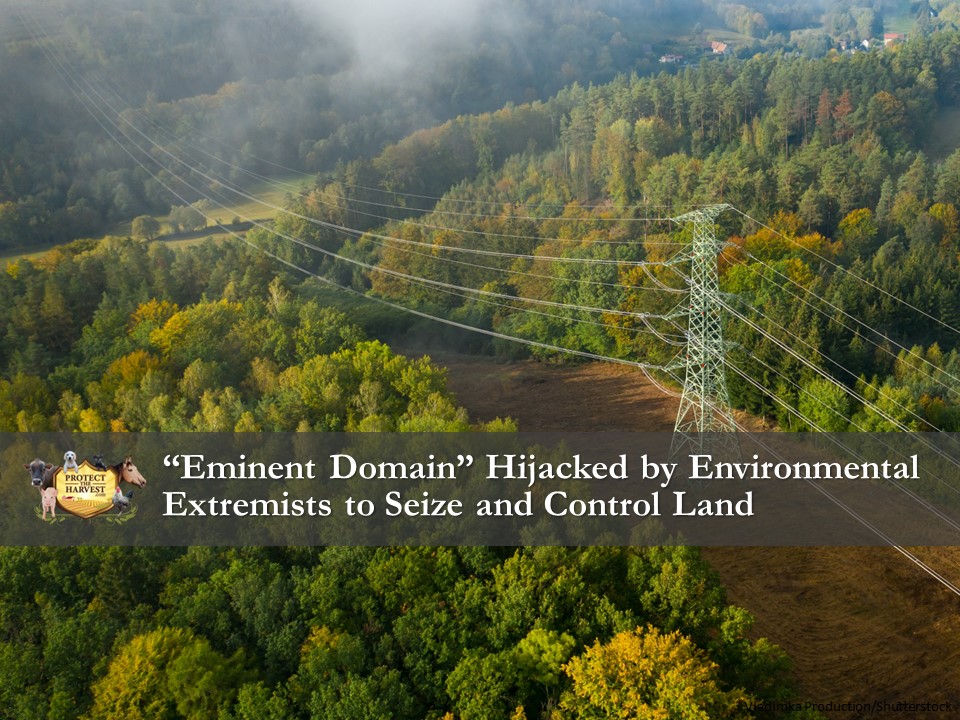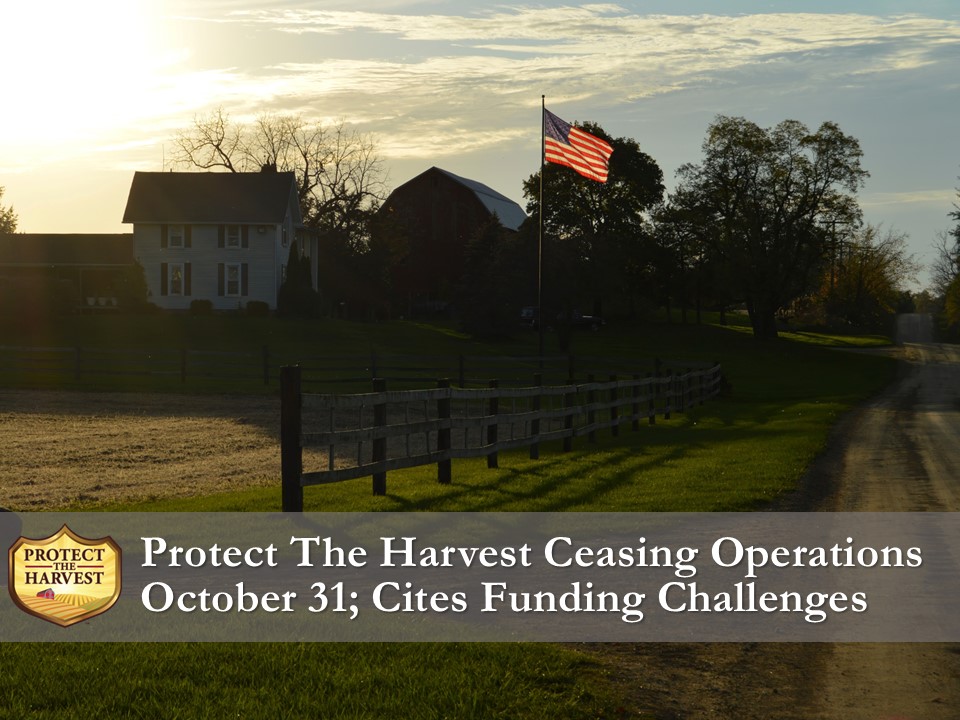“Eminent domain” is the process through which a government seizes private property for public use or the “public good,” with or without consent of the owner, or compensation. Originally known by the Latin term Eminenes Dominium, eminent domain can be traced to 17th century English common law.
Although eminent domain has been in existence for centuries, and has been debatably necessary in the development of communities, America’s founding fathers knew all too well eminent domain could be abused, and the Fifth Amendment of the Constitution includes the phrase: “nor shall private property be taken for public use, without just compensation.” In other words, in the United States, if a government seizes property, a fair price must be paid.
Despotic Power
Yet, the utilization of eminent domain throughout United States history has not been without controversy. In fact, an early Supreme Court case, VanHorne’s Lessee v. Dorrance (1795) referred to it as “the despotic power.” The use of eminent domain is not limited to the federal government and can be utilized by state, county, and city governments as well.
Historically, eminent domain was used for projects that directly benefited the public, such as roads, bridges, parks, public buildings, and other facilities or infrastructure. However, as time passed the power of eminent domain was expanded by the courts. Private entities such as railroads and utility companies began to be allowed to obtain property to build railroad tracks or transmission lines, but under regulations and with the requirement for equal access easements.
According to the Institute for Justice, in 1954, the Supreme Court’s decision in Berman v. Parker essentially shifted the working definition of “public use” to “public purpose.” The U.S. Supreme Court ruled that “urban renewal” was constitutional, affirming government efforts to clean up cities by eliminating slums and so-called “urban blight.”
The Institute for Justice wrote:
“In Berman’s wake, governments began vastly expanding the definition of blight so they could condemn perfectly fine properties for private development under the pretense of urban renewal. In addition, many state supreme courts adopted the rationale of Berman, reading their public use clauses the same way. Continuing down this slippery slope, governments began to bypass the charade of declaring an area blighted and instead used eminent domain to take homes and businesses so that the land could be given to other private parties who the government believed would produce more tax revenue than the current owners.”
Eminent Domain for Economic Development
In 2005, the U.S. Supreme Court issued another decision devastating to private property rights. In Kelo v. City of New London (Connecticut), the court ruled 5-4 that privately-owned lands could be seized for private commercial development based on the possibility of increased tax revenue or jobs. The Kelo decision therefore effectively enabled the rampant abuse of eminent domain for the sake of economic development, and the ability for those with the biggest bank accounts to drive people out of their homes, businesses, and communities.
In response, most states have enacted protections of some kind against abuse of eminent domain, either through legislation or state Supreme Court decisions. However, the threat of eminent domain being wrongly used against property owners remains, and has been amplified by the increasing push to implement the so-called green agenda and its green energy mantra.
Regardless of the fanaticism of the green movement, the reality of large-scale implementation of eminent domain involves numerous procedural and logistical hurdles.
SITE Act Would Simplify Property Seizure
A bill known as the Streamlining Interstate Transmission of Electricity (SITE) Act is currently in the United States Senate. The SITE Act would make it easier for the federal government to seize private property to allow utilities access for construction of new electricity transmission lines required by the green agenda.
The bill was originally introduced in August 2021 by Senator Sheldon Whitehouse (D-RI), and was reintroduced in March 2023 by Whitehouse and U.S. Representative Mike Quigley (D-IL). The SITE Act would “ease the process of constructing long range, inter-regional high voltage transmission lines” by putting a single federal entity in charge of permitting.
Currently, it is a lengthy and complicated process to obtain permits across multiple counties and states and establish easements and right of way from private landowners. For example, it took 15 years to complete the permitting process for the 700-mile TransWest transmission line, which connects a southern Wyoming wind farm to California. The goal of the SITE Act is to “streamline” the process by eliminating local and state approval and permitting.
No Energy Transition Actually Taking Place
The Department of Energy estimates that in order to stay on-track with the energy goals of the current administration, the United States would need to increase its current electricity transmission capability 57% by 2035.
Robert Bryce has been deeply involved with the energy industry for thirty years and has written several books on the subject. He found that such an expansion of the power transmission grid would amount to approximately 136,800 more miles of high-voltage transmission lines. From 2008 to 2021, the United States built 1,700 miles per year of high-voltage transmission lines. At the current rate, it would take 80 years to meet the target goals.
Even if the SITE Act were to become law, some experts believe that it’s impossible for such a massive expansion and shift to green energy to occur due to supply chain issues and labor shortages. It is also interesting to note that despite the costly frenzy to implement so-called green energy; its use is still being outpaced by the use of hydrocarbons – coal, oil, and gas – both nationally and globally.
Bryce found that between 2004 and 2022, global spending on wind and solar energy developments totaled a whopping $4.1 trillion, and yet the use of hydrocarbons still increased 3.4 times faster during that time period.
Simply put, the “energy transition” that’s supposedly taking place, isn’t. Bryce pointed out that, despite reality, the barrage of claims of transitioning to green energy has increased exponentially during the past several years, due largely to a focused effort by the current administration, the media, and green energy stakeholders to perpetuate this false narrative.
The very existence of such widespread propaganda seems to indicate the truth about the practicality and feasibility of large-scale green energy is widely known, yet willingly ignored. The question is, why?
Follow The Money
It’s quite telling that in April 2023, JP Morgan chief executive Jamie Dimon brazenly, and very publicly, called for the seizure of property to build wind and solar farms.
“We may even need to evoke eminent domain – we simply are not getting the adequate investments fast enough for grid, solar, wind and pipeline initiatives,” stated Dimon.
It would seem that the massive amount of money that’s already been sunk into green developments isn’t providing enough of a return to investors, and they’re getting desperate, perhaps disillusioned, or even angered, over false promises.
Land Grab
Seizing land is essential to the success of the radical environmental green agenda, but considering that the actual ability for “green” energy to power our nation is questionable at best, what is the real motivation? The underpinnings of the entire green, globalist movement appears to be built around centralizing governance and consolidating control of food production, so it stands to reason that seizing land by any means possible would be in the playbook.
Senator Quigley stated: “Without increasing transmission capacity we will be unable to end our reliance on fossil fuels and bring clean, renewable energy sources online. I am reintroducing the SITE Act, to eliminate barriers that have long stood in our way.”
An article from the Brookings Institution stated: “Fully realizing the promise of the clean energy transition for U.S. economic growth, jobs, and prosperity will require developing solutions that remove the choke points created by the existing infrastructure and regulatory systems and deploying both new clean energy generation and the systems required to connect these new energy sources to electricity consumers.”
The “barriers” and “choke points” they refer to are private property ownership, and the city, county, and state governments, which, by design, are meant to limit and balance out federal control.
Eminent Domain—Not Just for Power Lines
Currently, landowners in the Midwest are battling a proposed carbon sequestration pipeline. These pipelines take the carbon dioxide emitted from facilities such as factories, ethanol plants, and power plants and store it deep underground. There are 50 such pipelines in the United States, totaling around 5,300 miles. They are intended to help limit the amount of carbon dioxide released into the atmosphere, but critics question their true necessity and efficacy. Many believe that the pipelines, along with other “green” infrastructure projects, are little more than elaborate money-making schemes for environmental extremist investors, schemes that also conveniently commandeer crucial farm and ranch lands and take them out of production per the insidious White House 30X30 Agenda.
When all things are considered, it becomes increasingly evident the true purpose of the forced mad dash to implement green infrastructure is to seize productive American farm and ranch lands.
Lawmakers from several states have taken action against the latest manifestation of the environmental extremist and globalist agendas. We urge you to learn where your legislators stand on the issue, and to get involved in helping ensure a free and fed America for future generations.
Additional resources:
Read more about the 30X30 Agenda HERE
Read more about the abuse of eminent domain HERE
Learn how to stand up against eminent domain claims HERE
Read more about the green energy controversy HERE
Read more about Midwesterners’ battle against a CO2 pipeline HERE



